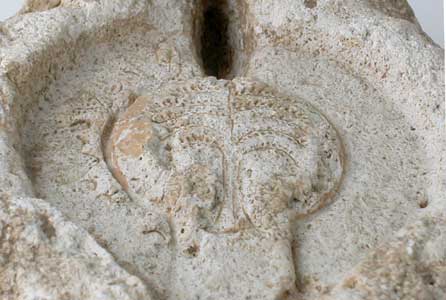Roman Period Limestone Lamp Mold, 200 CE - 400 CE
Limestone
5.5 x 8
PF.0070
Further images
In the Roman Empire, the clay oil lamp was as common as the light bulb is today. Often decorated with lively patterns pressed into the clay, they brought light to...
In the Roman Empire, the clay oil lamp was as common as the light bulb is today. Often decorated with lively patterns pressed into the clay, they brought light to the homes of rich and poor alike. The area of North Africa, now known as Tunisia, was a famous manufacturing center for oil lamps, which were exported all over the Mediterranean. This unusual object is a mold for the upper half of such a lamp, carved by Tunisian craftsmen and sent to Judea for use by local potters. The discus is decorated with an exquisite palm tree motif, a metaphor for abundance and prosperity, and an age-old symbol for Judea itself. This mold is a rare token of ancient industry.





